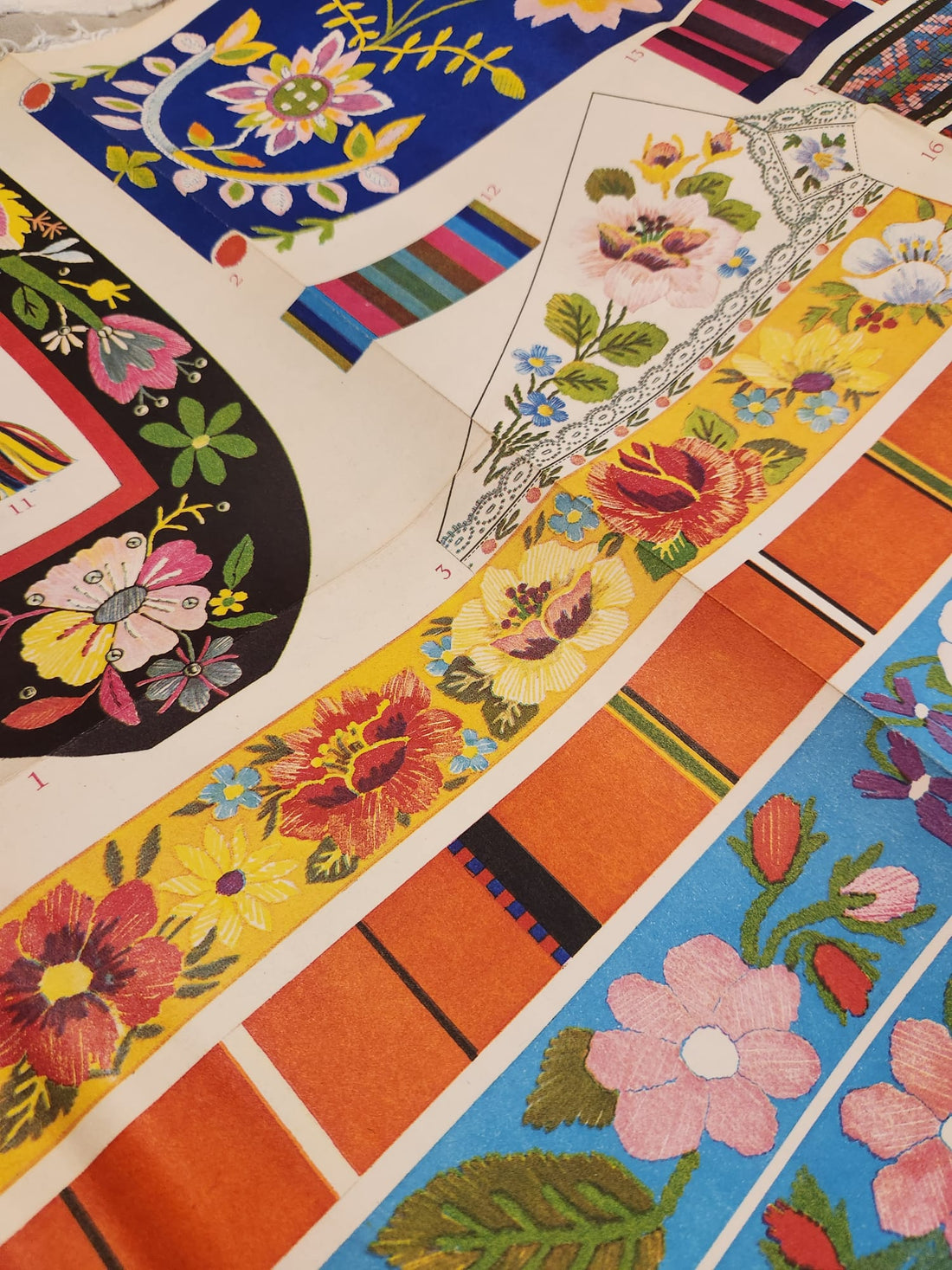
The Vibrant Muhu Patterns
Share
Muhu patterns are a stunning representation of Estonia’s cultural heritage with its beautiful yellows, oranges, blacks and floral designs, it is the iconic Estonian design. Originating from Muhu Island, the embroidery techniques used in these designs are not only a form of artistic expression but also a reflection of the deep connection Estonians have with their land, history, and cultural practices. This is especially true with the abundance of flowers you see in the summer.
The history of Muhu patterns is as fascinating as the designs themselves. The island of Muhu, located off the western coast of Estonia, with a long tradition of traditional handicrafts These patterns have been passed down through generations, and I hope it continues. Initially, these intricate embroideries were mainly used to decorate folk costumes, home textiles, and accessories, making them part of everyday life. Women spent years perfecting their skills, and the intricate work was often done in community gatherings, very similar to other regions in Estonia and I think this tradition continues today, especially in the winter months where there isn't much more to do other than handicrafts.
One of the most striking aspects of Muhu embroidery is its use of vibrant, bold colours. While many Estonian folk patterns feature muted tones of earth and nature, Muhu designs stand out for their bright, lively colours , such as hot pinks (one of my favourites), oranges, and bright yellows. These colours were inspired by the island’s stunning natural environment, with the flowers, plants, and landscapes of Muhu influencing the colour palette of the embroidery. The floral and geometric motifs seen in Muhu designs were not only decorative; they held deep symbolic meaning, often representing protection, prosperity, and a connection to the natural world. The act of creating and wearing these patterns was believed to bring good fortune and a sense of harmony with nature.
Perhaps one of the most fascinating traditions associated with Muhu patterns is the practice of bridal embroidery. Brides-to-be on Muhu Island would often spend years creating their wedding attire and household linens, embroidering them with the distinctive motifs. This process was not just about creating beautiful items for the wedding day, but it was symbolic of preparing for the new life ahead, carrying the weight of cultural heritage into the home. Again, this is similar to other areas of Estonia, like Setomaa. It was believed that these embroidered items would bring beauty, love, and good fortune to the couple’s marriage. One of the little secrets I learned while I was there last time.
In the modern day, Muhu patterns are part Estonian identity, as they are one of the most recognised patterns from Estonia. While the traditional use of these designs in folk costumes and household linens has diminished, the motifs continue to appear in contemporary fashion, homeware, and accessories. The bold and colourful designs have found a place in modern design, maintaining their historical significance while also evolving with the times. At EstonianDesignsAU, we celebrate the beauty of Muhu patterns by incorporating these vibrant colours into our products, simply because it brings joy and helps me feel connected to Estonia when ever I see it.
Muhu patterns are not just designs, they are a connection to Estonia’s past and a celebration of its vibrant culture. By incorporating these beautiful, intricate patterns into everyday items, we continue to honour the traditions of the past while creating something meaningful for the future. If you’re looking to explore more of this stunning heritage, have a look at the Muhu collection and get yourself a little gift inspired by Muhu patterns.
